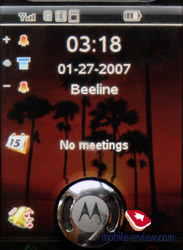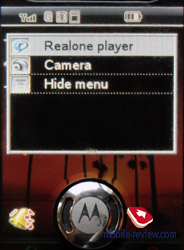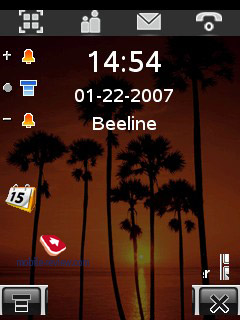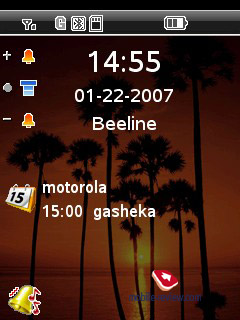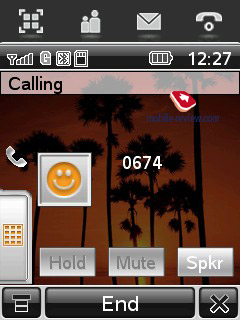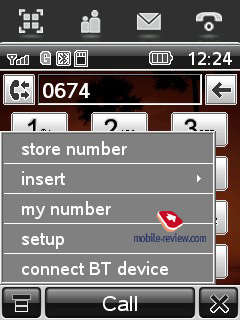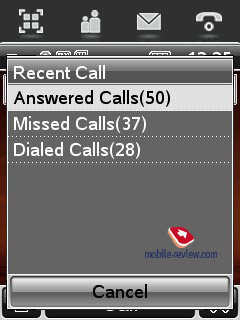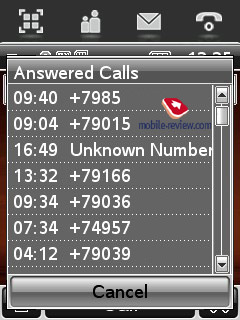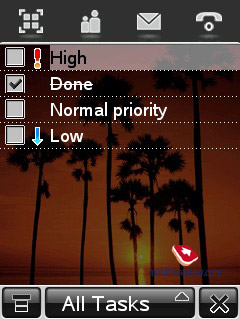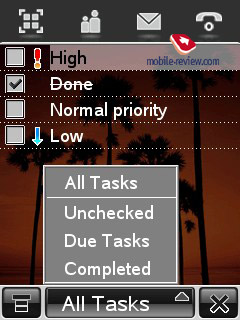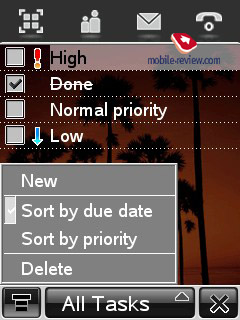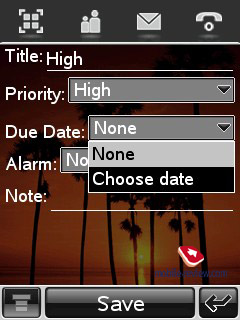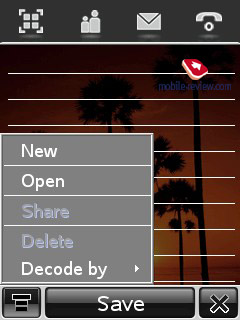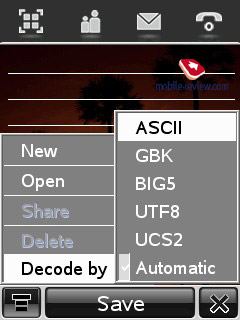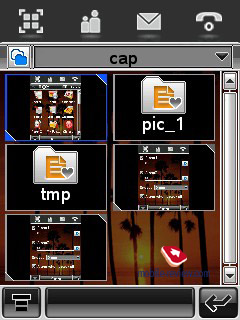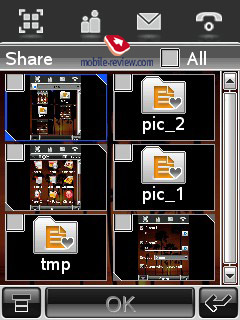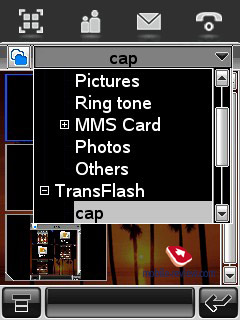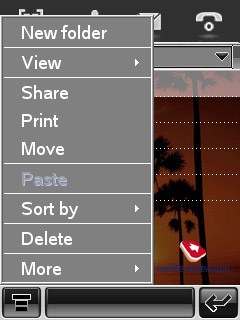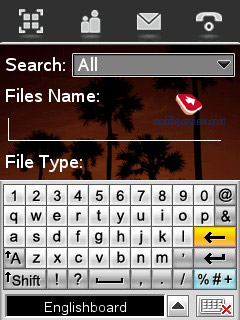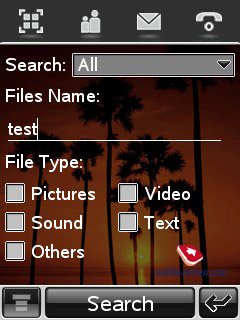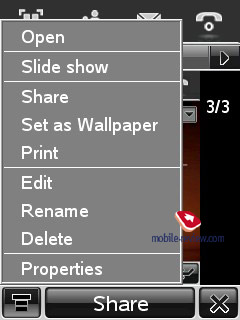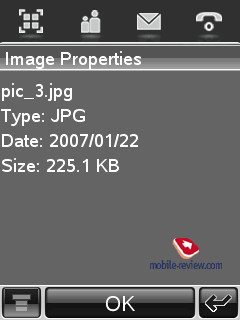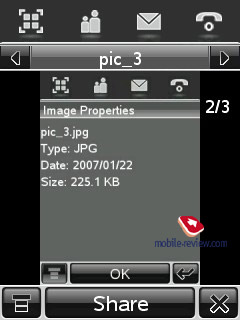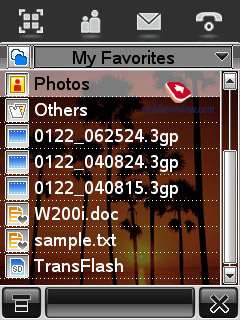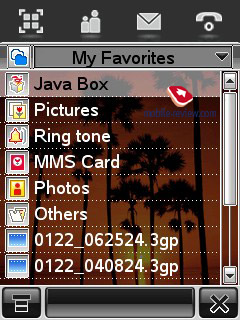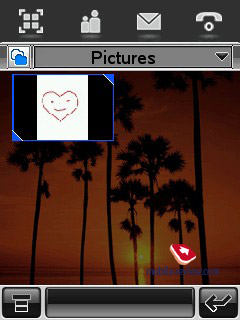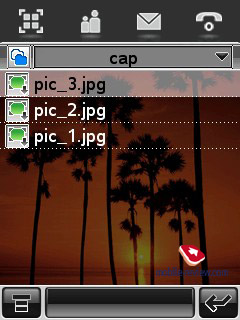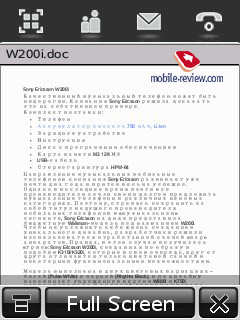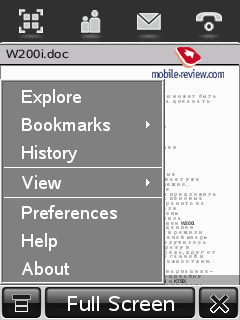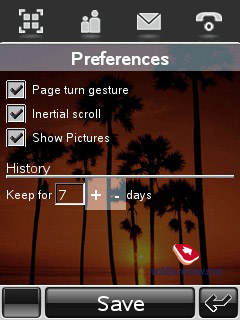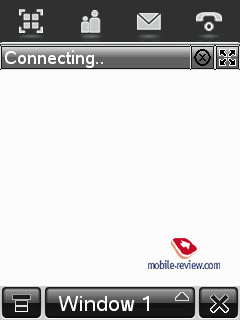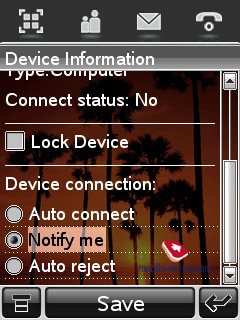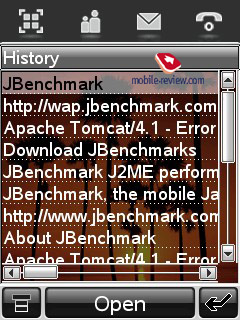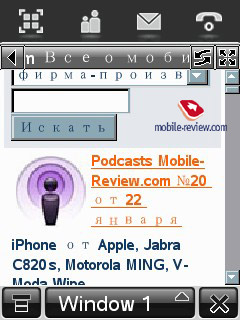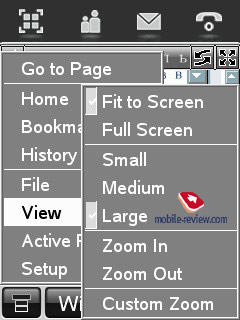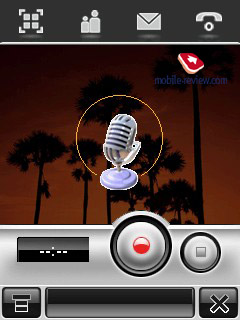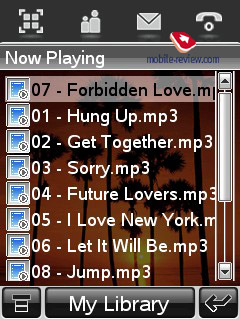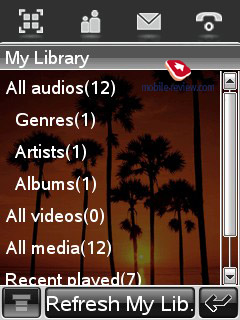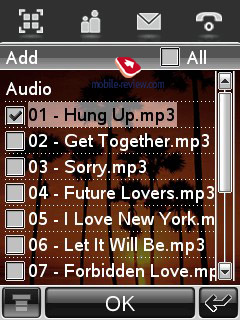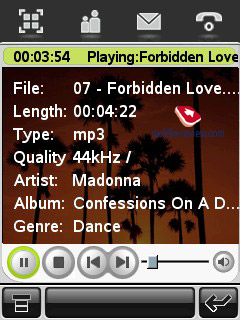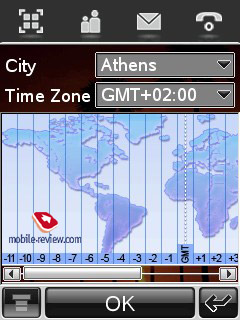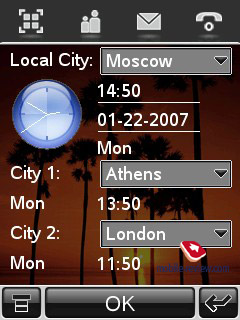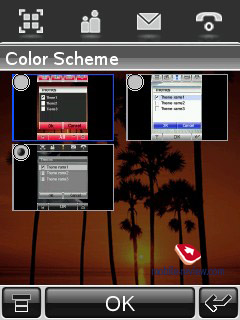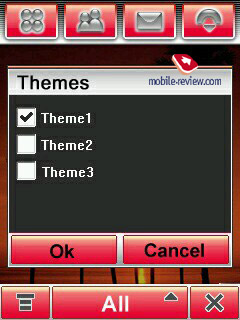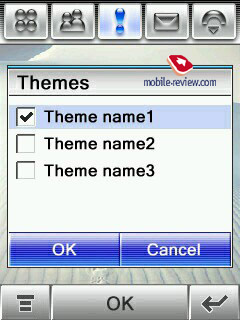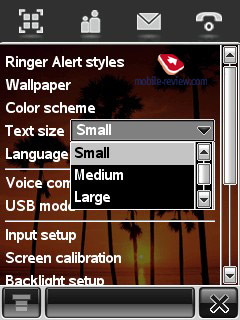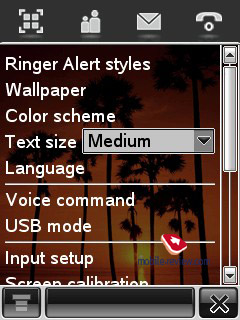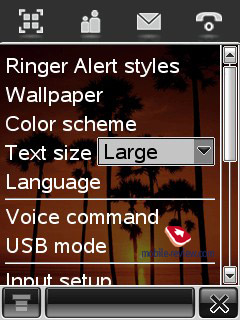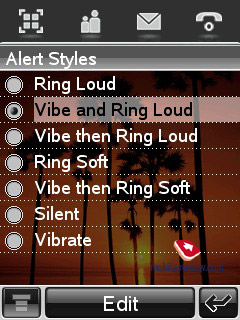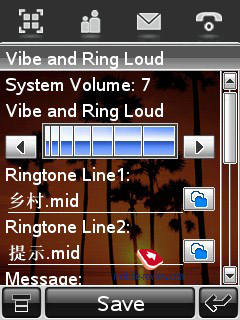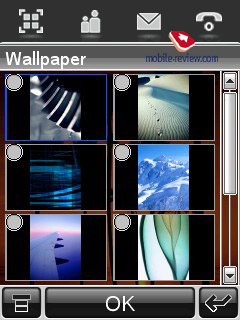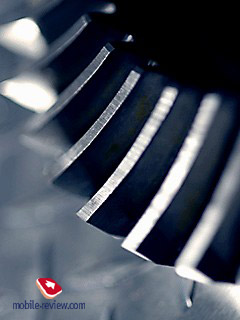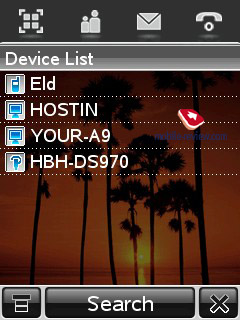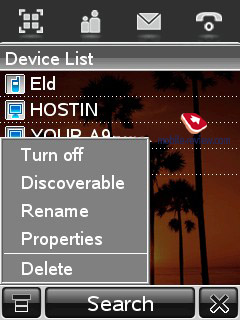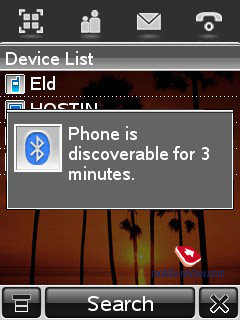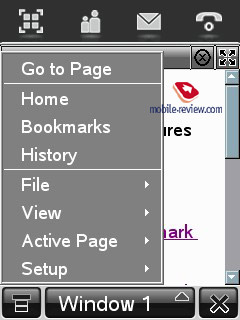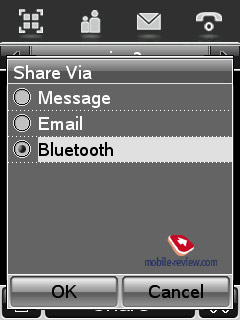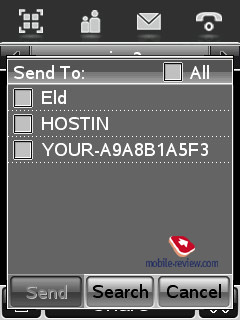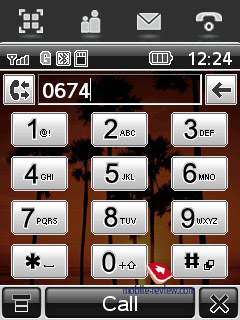|
|
Review of GSM-handset Motorola MING (Motorola A1200)
Sales package:
- Handset
- Two styluses (one spare)
- Two batteries (only for China)
- Charger
- microSD memory card, 128 Mb (varies by region, for China – 512 Mb and adapter)
- Wired stereo-headset with a button
- User guide
- CD with software
- Pouch
Motorola pioneered in the market of Linux-based devices by releasing a range of solutions running eZx operating system, specifically these were Motorola A760, Motorola A780, Motorola A910, ROKR E2. The E2, though, stands apart from the rest of the list, for it lacks a touch-sensitive display and sports a totally refined interface, matching that found in Motorola Z6. But the most earthshaking offering in this range would be Motorola A1200 renamed in MING in the middle of March, 2006, when it made it to Hong Kong. The hieroglyph “ming” comprises characters standing for the sun and the moon, and thus is striking enough and easy to pick out. Such accurate positioning for a sole local market clearly indicates that the maker didn’t have intentions for launching it in other regions, for example, in Europe. Indeed, throughout the entire 2006 most of the MOTOMING’s (final title of the model, after the triumph of MOTO prefix and new classification) sales were generated in the Chinese market, while the MING was not officially distributed in other regions outside China.

In Brazil the MING is known under the name of “MOTOTASK” – this is the second country to have gotten this handset. On top of that, if in China it was the A1200, in Brazil it turns into the updated A1200i edition, where “i” suffix means “international”. Though, the differences from the original MING are insubstantial: equalizer support in RealOne Player, EDGE connectivity, “talking” dictionary – you write a word, then the handset speaks it aloud in a foreign language (available only for the European edition for the time being).
The manufacturer positions this handset as a smartphone, which is seemingly the right thing, due to it carrying Linux onboard, however it’s almost impossible to find and install extra software. I have to mention, though, that such software does exist, written mainly by enthusiasts and thus there isn’t much of it lying around. For the most part, functionality here is expanded via Java-applications. On the other hand packing a bevy of features, the MING can be actually attributed to smartphones. It turns out that much like its predecessors, the MING finds its place somewhere between regular handsets and smartphones – a sort of finalized “do-it-all” solution for those not keen on bothering about new applications, and rather interested in a product with high default functionality.

Let us look at this solution from all possible perspectives, the more so because it deserves that. For starters, its design can be rightfully called offbeat and even somewhat revolutionary. At a glance the MING is a conventional-looking fold phone, at least there is a flip mounted on it, and on top of that you can make and receive calls only with this open. But the flip is made of transparent plastic, exposing the display – have you already guessed that now it’s possible to interact with the handset without flipping it open? The idea is very fetching, as it allows avoiding the necessity of embedding an outer screen and thus slimming the casing down and making the device less power-hungry.

The evident letdowns of the model include the external surface’s being prone to smudge, over and above, when inside things don’t get better – the touch screen also picks up fingerprints with ease. Nothing can be done about that – you just have to get used to that price you pay for the MING’s design and functionality. At the beginning the handset had been available in two color schemes – silvery-white and black – a bit later the European market saw release of the red-painted edition, which doesn’t seem feminine, this trim is positively good-looking.
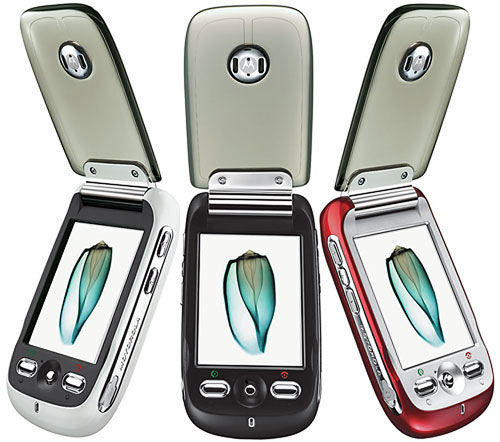
The MING measures up at 95.7x51.7x21.5 mm and weighs in at 119 grams. Dimensions-wise the handset is reminiscent of an ordinary flip phone, thus you will never stumble upon any issues with using it. Some claim, though, that hooking the flip and unfolding it is pretty challenging – in fact, such subjective feeling is a reality and caused by the minor thickness of the flip itself. At the same time there is a special dent for your finger on the casing, which makes for easy one-handed device management experience once you master it – the first impression of its being inconvenient is utterly delusive.





Almost the entire casing is finished in soft-touch plastic, the chrome-coated insets are made of plastic as well. However the chrome plate on the back is weak against scratches, so that with time you will see how the paint comes off. My brand-new unit lost some after about 2 weeks of usage, yet luckily the damaged area hasn’t gotten larger. Overall, the build quality and the materials used are very admirable – the handset feels robust, no loose details at all.

The earpiece’s construction is pretty interesting – unfolding the cover you will see two wires inside it going into the speaker, which is truly an unusual design that does appeal due to being dead-simple and yet elegant. This is somewhat similar to watches with transparent back cover – whether the user wants it or not, he gets into this handset’s little secret.

From the emotional standpoint, the MING is one of a handful of phones that are full of fashion. The model is by no means faceless – on the contrary, its good look is a true eye-picker. Many told me that it was the design that grabbed their attention in the first place, rather then the functionality which was secondary at the end of day. I shall remind you that early in 2006, such approach was revolutionary to some extent, even though Nokia was the company that pioneered this area.


The handset is almost free of any functional keys, due to being normally managed via its screen. The display here sports a diagonal of 2.4 inches with a resolution of 240x320 pixels (36x48 mm) and 262 K colors (TFT). The picture quality provided by the MING’s screen is superb, and is impossible to fault. In the sun it remains well-visible, while the flip acts as an extra filter, making for legibility of the information displayed on the screen. Like we said above, the handset comes equipped with a touch screen; the stylus silo is placed on the right spine, yet in most cases you can easily do without it (except for, maybe, texting) – for typical interactions your fingers will prove to be just enough, especially for dialing numbers.



Further down, there are pick up and hang up keys, with the latter doubling as the power button. Between these buttons sits the joystick, which is fiddly since it is quite small and on top of that is sunk into the casing too deep. Actually, I came across this gripe for the first time when I was writing this review, even though I had had two months of quality time with the MING. Why am I so indifferent about the joystick, I hear you ask? Frankly, I didn’t feel the need in these dedicated keys and the joystick in particular and preferred using only the side-mounted buttons and the handset’s display. Naturally, the power on/off button is very essential, but for the rest, these keys are sort of superfluous. I mean they are left completely out of work. As a matter of fact the developers just got afraid of making a small step forwards and forgoing all buttons on the fascia; nevertheless they really should have done this. This concept is adopted in Apple iPhone, while it was the MING and the family of such devices that got onto this first.

While at a glimpse the handset doesn’t have many side-mounted controls to offer, they replace many stand-alone buttons found in other cell phones. On the left-hand side are two volume keys, which are in fact used for most interactions with the MING, but we’ll say a few words on that as we dig deeper into the review, between them is the “select” button, identical to “OK”. Here you will also find a rubber flap covered 2,5 mm audio jack used for plugging in the headset. Flipping over to the phone's right side, the dedicated camera and voice (voice dial or sound recorder) buttons can be found, along with the miniUSB socket covered by a rubber flap, which is linked up with the casing.


On the rear is the lens of a 2 Mpix camera, similarly to Motorola V3x armed with mechanical macro/normal modes toggle. While the plastic back cover goes off with ease, it doesn’t expose any gap. Beneath the battery is the SIM-card bed, as well as microSD memory expansion slot (cards with up to 2 Gb onboard will do – we checked that). The handset utilizes an 850 mAh Li-Ion battery (BT50). As the manufacturer claims it can keep the MING up and running from 140 to 250 hours in standby mode and provide from 3 to 7 hours of talk time. In conditions of Moscow networks the phone lasted for about 2 days on 50 minutes of calls, up to 20 minutes of web surfing, regular mail checks. Should you happen to be easier on it the battery life instantly goes up to 3 days. But even the most intensive usage mode will allow having the handset alive for more than one day. Music playback has no significant impact on the lifetime; the phone can play mp3 tracks for about 10.5 hours straight. Use of stereo Bluetooth headset, though, greatly reduces the battery life you get off a single charge, but even with that, the MING works about 7 hours. It takes the handset 2 hours to charge from empty to full.




Menu
The device is powered by the CPU we are already familiar with - Intel XScale PXA270, running on 312 MHz. Unlike Motorola Z6, it is not a single-chip solution (well, I shall say, not a dual-chip one); the handset utilizes ARM CPU by Freescale for handling the reception part (DSP 56000 chip). The MING comes bundled with 64 Mb of memory, where 3.5 Mb is reserved for contacts, while the operating system occupies 52 Mb. The remaining 8 Mb can be used in any way you like, but it would be better to install a capacious memory card outright, luckily managing it is no different from working with the inbuilt memory.
Managing the handset flip-closed. With the clam closed you can call up the short menu by pressing the side-mounted key – it comprises Camera and RealOne Player. The player can be managed without folding the handset open, which is very convenient. You can also access the camera and video recording capabilities from here as well, or you might want to take the advantage of the dedicated key on the right.
For various pop-up events it is possible to accept or cancel them in two touches. On incoming call using the side-mounted keys you can decline it or muffle the sound. Even though the number of available settings is significantly smaller than that found in Motorola A780, the MING lacks an external keypad. Back on the plus side, one of the handset’s highlights is the ability to handle music playback in flip-closed position.
While at the standby screen, without opening the phone you can change current profile.
Voice dial implementation in this handset is close to perfect – with the clam open you just have to press the voice dial button and while holding it, say a name or a command. Speaker-independent technology does the rest, no prior voice training is required, the MING recognizers your voice without any problems (works for English language, good pronunciation is not a must).Apart from searching contacts in the phonebook and dialing numbers, you can take advantage of dialing digits with voice or executing loads of commands – to be precise, about 40, which enable managing all default features and applications of the handset. For example, they serve for opening the control panel, changing current profile, creating an SMS for a specific recipient. What is more the handset boasts text-to-speech capability – having opened a message you hear a male voice reading it out. For English language this feature works very well. A number of voice commands have voice confirmation and answer enabled, in other words, saying Check Signal or Check Battery, in response you hear signal strength and battery life remaining respectively.
Interface. To manage the handset you are supposed to take the stylus in your handset, however dialing a number or a short message can be seamlessly done without it. The main screen bears some resemblance to the Today window featured in Windows-powered smartphones. Below is the tool bar containing 5 manageable shortcuts to applications. A bit above is Date and Time field and then calendar events scheduled for today. The screen is topped by four thumbnails serving for quick launch of the core functions: dialing display, messages, contacts, applications (list of all applications installed) screen – this bar can’t be modified in any way. When an event you can’t react to (missed calls, messages, and organizer events) takes place, the information on it pops up in the top line (a square with flashing exclamation mark). The idea of such pop-up icons and context notifications looks good and, more importantly, does well.
Right beneath the top navigation line is the status bar, showing signal strength, Bluetooth and GPRS status, battery charge left. Pressing on this bar calls up a window featuring detailed report on the handset’s status First improvement – detailed battery indicator (the icon now contains three bard) on a 100-percent scale. This window also shows you current carrier name, ID, antenna status (can be turned off with a single flick, flight mode), GPRS (can be switched off as well), IM (status, can be turned off), Bluetooth, safe extraction of TransFlash-card. In addition you are offered data counters for GPRS-sessions and CSD-connections.
I shall make a note here, though that the menu found in the A1200i is different from that of the original MING produced for China (China Mobile), here the menu is styled in red, while the European edition shows off blue scheme, identical to that of the ROKR E6.
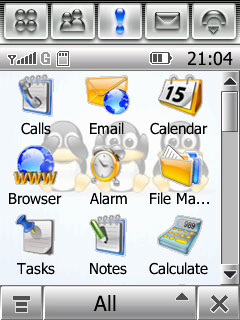 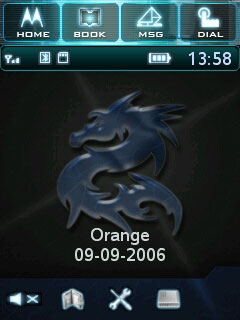
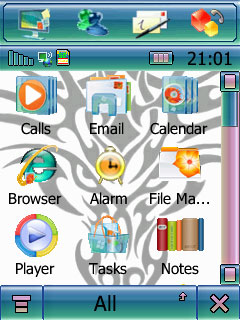
To wrap up the story about the interface, let us look at the standard applications window. At the foot you’ll see current selection keys and context menu button. Checking the right corner reveals an icon with a cross or bended arrow on it – in the former case using it closes an application, and in the latter it just minimizes it. The handset comes included with preemptive multitasking system. While in the menu you can call you the list of currently running applications and switch between them (which was impossible in the previous models). If there is enough of RAM available, then the application keeps working, so that you can get back to it any time, and in case there is insufficient amount of memory left, then the app you started up first will be terminated. This handset features a stand-alone window housing the list comprising active applications, where you can check the ones you don’t need and want them closed. Tapping with stylus and holding stands for calling up the function, with the circle of color dots appearing around the place you tapped, which is somewhat similar to PDAs running on Windows OS. The interface the MING is armed with is neat and, more importantly, intuitive, which makes for easy process of mastering the handset.
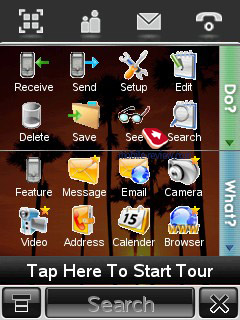 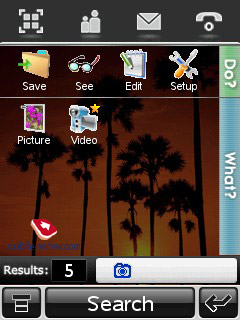
Text input. The handset allows two text input methods – on-screen keyboard and handwriting. Working with the virtual keyboard is a cinch, since there is nothing special about it. For some features the on-screen keyboard pops up big enough to enable you type using finger pads (so that even pressing the keys on it with thumbs is not a problem), for example this happens in the phonebook. Additional layouts are implemented via individual views of the on-screen keyboard To speed up typing-in process you can enable predictive text input (much like the T9), although here the handset keeps in memory a lot of words you used in messages, including those typed in other languages. This is a unique ability of Motorola-branded solutions. For Russian language you can install a non-official keyboard version – this procedure and the required software are all the rage now on various forums.
The handwriting text input mode brings up a window divided into two parts, which makes for faster texting. Though, the MING doesn’t do well on the recognition front, so you would be better off with the on-screen keyboard.
Over and above for fields requiring numeric data, you are at liberty to call up a numberpad, which is a sort of the on-screen keyboard.
Dialing display. The screen gets filled up with the numberpad, allowing for hand input - the size of the keys is just fine for this purpose. With a single touch you can call up Recent Calls list. As for the settings, we can’t overlook various times, adjustable screen contents (call time, total duration, cost, etc), call timer (1, 3, 5, 10, 15 minutes). You can use this menu for quick pairing up of a Bluetooth-device.
Phonebook. The handset doesn’t set any limitations on total number of entries, yet everything is down to the volume of free memory here (3,5 Mb for text notes). For each contact you can submit up to 2 mobile, 2 home, 2 work numbers, fax, two e-mail addresses, two PTT addresses, Chat ID, group and image. The “Address” filed is divided into two – home and work. In either of the cases there are a number of sub-fields available – country, zip code, state, address. Naturally, web-page address, birthday fields are here, as well the ability to input any anniversary date, data on children, nickname. The fields for submitting company name, assistant’s name and an extra text note are nothing out of the ordinary. Each entry can be personalized with the help of a ring tone and a picture, which gets assigned to the contact itself, rather than a specific number, like we have come to expect it from Motorola-branded phones. The same holds true for the ring tones, which can be an mp3-file as well. When viewing an entry you can make the handset show all fields or only the main ones (which include first entries for all available fields, for example first mobile number, while the second is hidden, etc.).
 
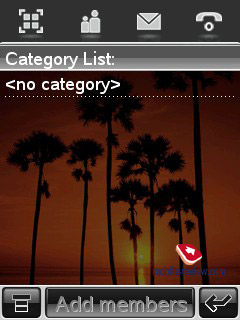 
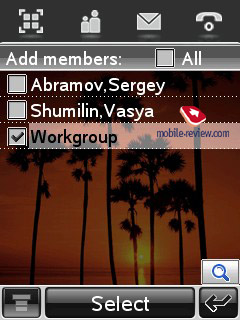 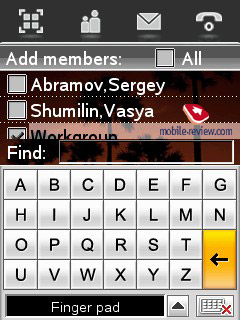
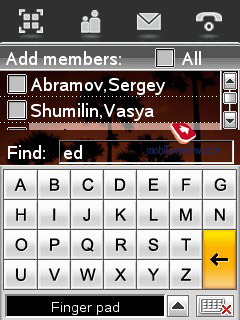 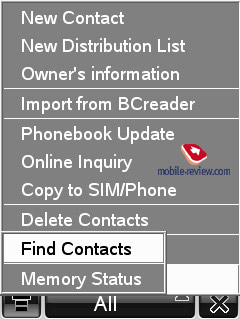
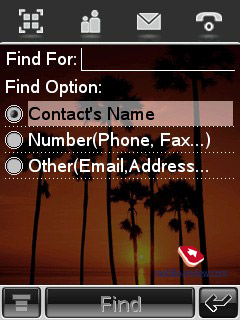 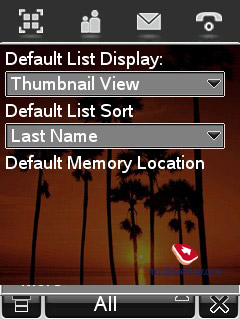
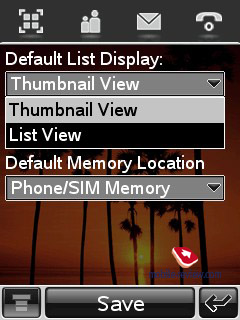 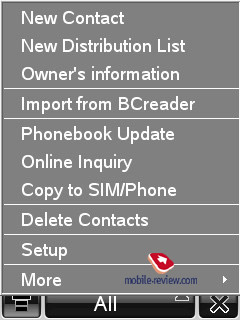
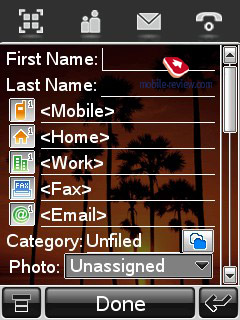 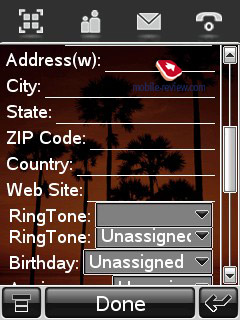
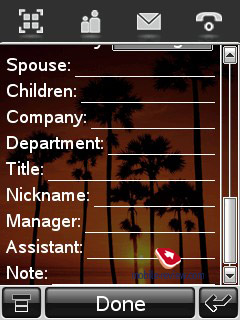 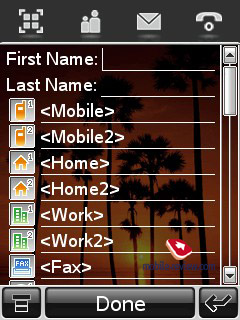
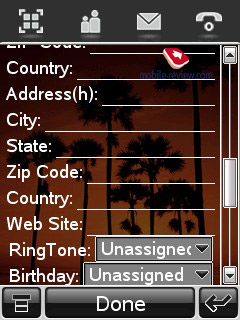 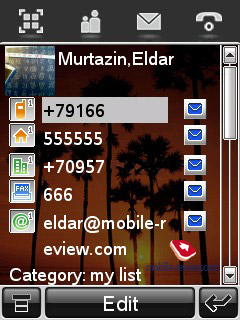
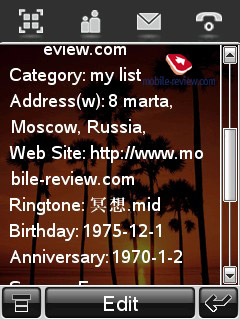 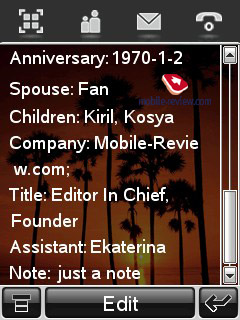
The general list can display entries from both the handset’s memory and the SIM-card – it’s up to you to decide. The phonebook can also be sorted by First or Last name and viewed as a list or thumbnails. In the former case you see a plain list of contacts with no additional visual information, while in the latter case the MING offers you a 3x3 grid, yet each caption can be only 8 symbols long with no scrolling allowed, so that you will have to call up detailed view of a contact, if these captions will actually turn out to be identical for, say, two entries.
When searching for a name, the handset sorts the list instantly, leaving on the screen only contacts that match the phrase search line. This is very handy, especially in light of the fact that the function easily handles a phonebook with 700 moderately filled contacts inside.
Fast switching between groups is available, as well as personal mailing lists – the settings for this are very flexible. On top of that the handset has nothing against you copying all entries from the IM-card onto the phone and vice versa.
Any contact can be sent to another device in the form of a vCard without any hassles. Synchronization with PC, specifically with MS Outlook, runs smoothly – while in the localized version of the application you will encounter certain difficulties with fields recognition, the original version handles synchronization quite well.
In terms of what it brings to the table, the MING’s phonebook is one of the market’s best offerings to date, throw in the speaker-independent voice dial as well and you get a true powerhouse.
On incoming and outgoing calls the window with contact’s details pops up on the display. The image thumbnail is quite tiny, equaling the one found in the phonebook in size, and can’t be enlarged. For some this will prove to be a shortcoming, but taking account of the fact that you will carry the handset only with the clam closed, such implementation doesn’t look illogical.
Namecards recognition. A stand-alone menu item available in the phonebook. Using the camera you can recognize the text printed on a namecard – for English language, the application succeeds in 70 percent of cases. However, as it stands now, this feature is quite crude and not ready yet to be considered a useful tool.
Messaging. Outside this section is e-mail, which is managed in a separate application. The explanation lies in two prerequisites. The first, and the foremost one, is the fact that the handset utilizes the solution by Magic4. The general list holds all folders, at that the user can create some of his/her own and protect them with password. Incoming messages, both SMS and MMS, are stored in Inbox by default, but you can choose any folder of your own, including the protected ones, at that this option is set up for SMS and MMS separately. Nonetheless, you can’t create folders on the memory card, being limited to the handset’s built-in memory.
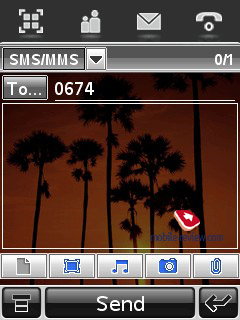 
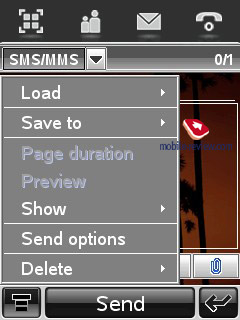 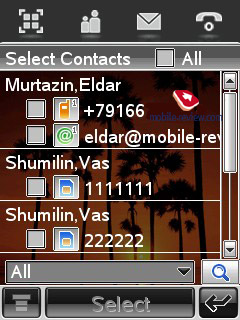
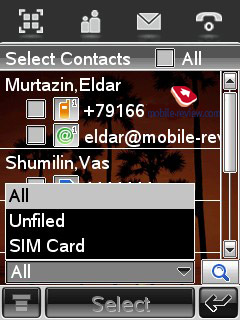 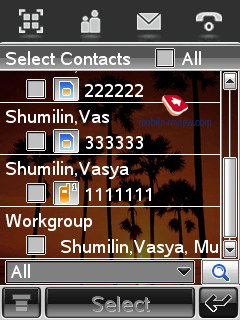
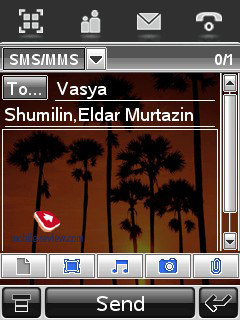 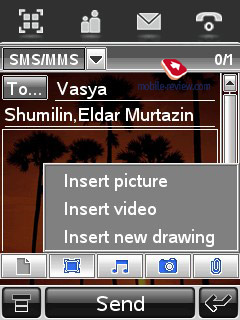
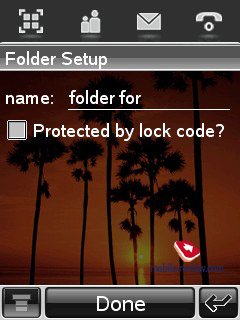 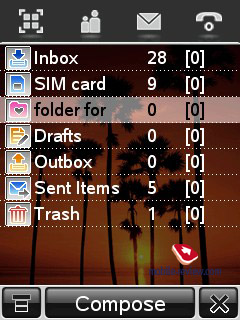
Creation of a new message takes place in a very basic editor – on top of the screen you see what kind of message it is (SMS/MMS); depending on the contents the handset automatically defines its type. Such deliberate simplification of the interface layout does not affect the overall experience. Message templates, including those for MMS, are available wit the MING. For all types of messages you can make use of auto-signature. Of course, support for EMS is onboard. The handset has no caps on maximum number of stored messages.
Recent calls. Each of the available three lists comprises 30 entries with specified date, time and call duration
E-mail. In a separate application you can setup any number of accounts, and modify authentication settings of mail send/receive. While the handset doesn’t allow you to retrieve headlines only, you can put the limit on maximum size of a latter, so that in case it exceeds this value, you see the headline of that letter. The upper bound here is 5 Mb. The user can create own folder for mail storing purposes.
Saving for archives, which the MING can’t handle, all types of attachments are supported. By default the phone enables you to view MS Office, Adobe Acrobat documents in addition to the image and text formats you get with this kind of devices. On sending a letter you can insert any file stored in the phone’s memory or the memory card in it, add an entry from the phonebook or the organizer. Speaking of its letdowns, we are to note missing settings for encodings management, which leaves the device capable of working only with current global settings. Although messages in the Russian 1251 are readable, the font gets to be somewhat strange, stretched (again, with the help of a small patch this problem vanishes). Localization is the weakest spot of this handset, as it is aimed at the Asian or American markets in the first place.
Calendar. This application gives month-, week- and day-view of all scheduled events; the default appearance may be modified in the settings. Aimed primarily at the Asian markets, the MING comes pre-installed with the lunar calendar. All events here may have a title, location, category (title and color are specified) and be recurrent. A handy feature is the ability to choose “time type” for any entry (busy, out of the office etc), which allows instantly seeing free times-slots – such function is truly vital during exhibitions, that’s for sure. Any entry may be attributed to the category of personal events.
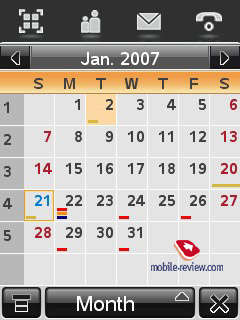 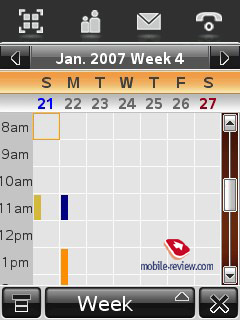
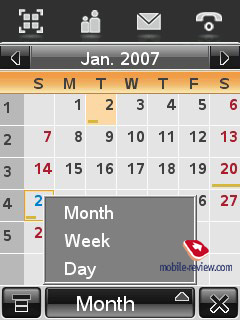 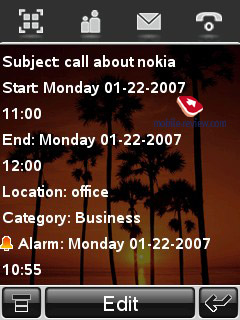
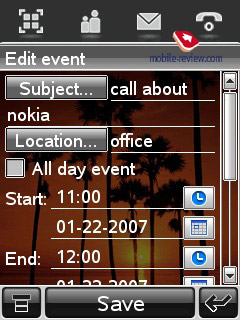 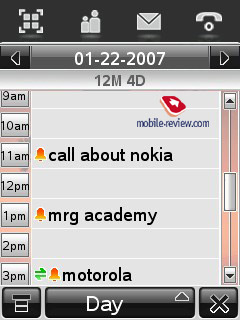
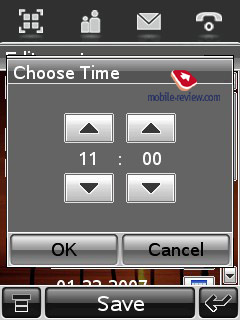 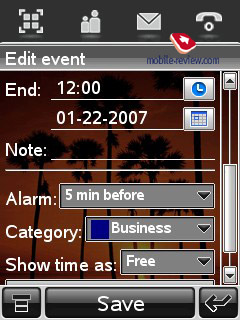
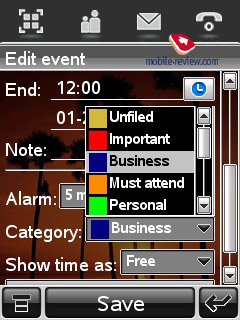 
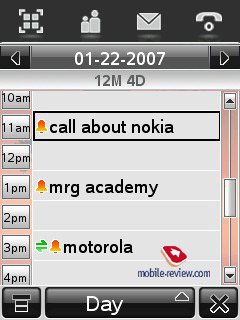 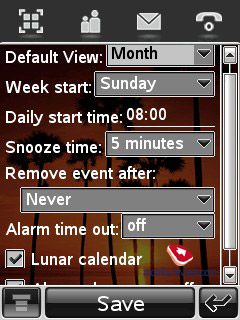
Many will find the Invitation function out of the ordinary, yet pleasant. To use it you just need to start submitting an event, fill in all fiddles and then send it to a specified number or to a list of recipients. Thus the entry shows up in the calendar and gets received by all persons concerned. Initially I didn’t turn to this feature too often, but now have come to realize that it is so much harder to do without it.
Tasks. A plain list of tasks, for a particular entry you can specify one of the three priority types, end date, a short text note and set up an alarm. While it looks very simple, you’ll barely need something greater functionality-wise.
Notes. This app allows creating .txt notes that can be saved in any place/folder in the handset’s memory. No size caps should be observed. Note’s encoding is also adjustable.
The calculator is quite unsophisticated, lacking any advanced functions.
Alarm clock. The MING plays host to two one-time alarm clocks, that work every day. Custom tune is selected in the profiles, Snooze mode is onboard, as well as auto on feature.
File manager. A full-fledged manager allowing you to move, copy, delete files and folder. From here you can also beam many files at once via Bluetooth. Folders list can be viewed as thumbnails or a standard list.
Picsel Viewer – the most interesting application of all that the MING comes loaded with. Using this app, you can view various office documents such as Power Point, MS Excel, MS Word, Adobe Acrobat, images, but that’s about it, since editing capabilities are not provided.
Camera. The handset carries a 2 Mpix camera onboard with macro mode toggle on the casing. The camera supports the following resolutions - 1200õ1600, 768õ1024, 480x640. Three quality types are available – high, normal, low. Listing the extra settings we can’t overlook the night mode, light settings (Normal, Direct Sun, Incandescent, Fluorescent). The handset also comes included with a handful of effects (Black/White, Sepia, Solarize, Negative Art) and digital zoom (up to x8).
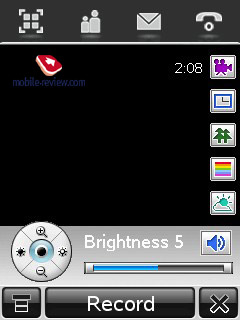 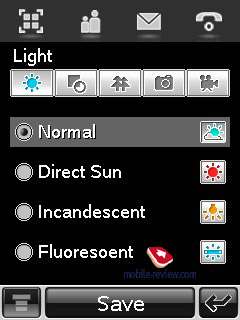
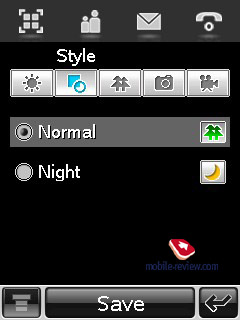 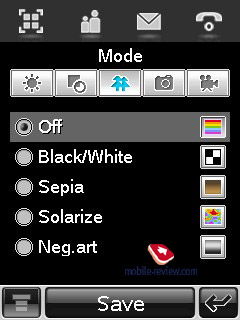
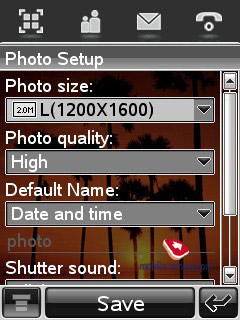 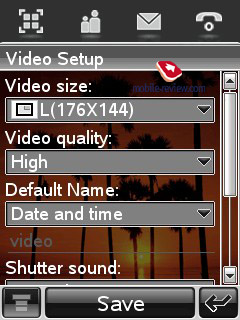
The quality of snaps taken by the MING is not always adequate, which leaves us no choice but rate it as average. On top of that you always have to hold your hand still to avoid blurry photos, since the shutter sound not always means instantly processed of a shot. The best results are acquired in sunny weather, whereas in the rest of conditions, the gamma is insufficient. It is good to see that while managing the camera the image takes up the entire display. On the plus side, is also the camera interface, where with a single click on the touch screen you can alter various parameters. With the clam closed the image is shown in portrait mode, which doesn’t prevent you from shooting, though.
 |
 |
(+)
maximize, 1200x1600, JPEG |
(+)
maximize, 1200x1600, JPEG |
 |
 |
(+)
maximize, 1200x1600, JPEG |
(+)
maximize, 1200x1600, JPEG |
 |
 |
(+)
maximize, 1200x1600, JPEG |
(+)
maximize, 1200x1600, JPEG |
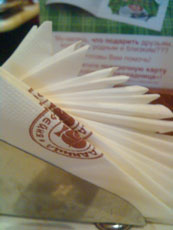 |
 |
(+)
maximize, 1200x1600, JPEG |
(+)
maximize, 1200x1600, JPEG |
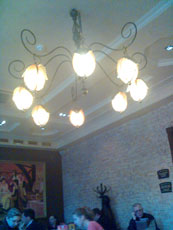 |
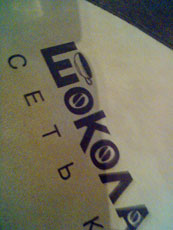 |
(+)
maximize, 1200x1600, JPEG |
(+)
maximize, 1200x1600, JPEG |
 |
 |
(+)
maximize, 1200x1600, JPEG |
(+)
maximize, 1200x1600, JPEG |
 |
 |
(+)
maximize, 1200x1600, JPEG |
(+)
maximize, 1200x1600, JPEG |
 |
 |
(+)
maximize, 1200x1600, JPEG |
(+)
maximize, 1200x1600, JPEG |
 |
 |
(+)
maximize, 1200x1600, JPEG |
(+)
maximize, 1200x1600, JPEG |
Video may be recorded at a resolution of 128x96 or 176x144 pixels in one of the three quality types. The video clips come out shaky, which comes as no surprise, though.
MO Browser – fully functional Opera browser for viewing web-pages with wap protocol support onboard (version 2.0). Full screen mode, selection of encodings and auto encoding identification are at your disposal. The user can modify font size, make new pages open in stand-alone windows. To my mind this browser is really fetching, falling only marginally short of Nokia OSS Browser.
Recorder – this app allows unlimited number of voice memos in AMR format, which have no caps in terms of duration.
Photo Editor – formerly known as Drawing Pad – application, where you can create sketches of pictures, choose lines color and lay on various images. Unlike the Sketch utility foind in Symbian, where it serves for making fast handwritten note, Photo Editor is a basic graphics editor in the first place, and only then an app for composing own notes, which is a secondary function here.
FM-radio. The handset’s memory can hold up to nameable 30 stations; we have no niggles with the reception quality.
Real Player – the media player of the handset supports both audio and video playback. Progressive rewinding, as well as ability to beam stereo-sound to Bluetooth devices, is embedded in the MING. At your disposal are also playlists, random playback, and equalizers enabled only for the A1200i (five of them – Bass Boost, Rock, Treble Boost, Vocal Booster, Vocal Reducer). The player seamlessly deals with MP3, WMA v9, RealAudio, AAC and AAC+.
The sonic experience you’ll have with the MING is average and inferior to Motorola Z6 and ROKR E2 – the sound here lacks something and feels somewhat unnatural. Even Sony Ericsson DS970 stereo Bluetooth-headset doesn’t save the day. Overall in the sense of its music department the handset lags behind other Motorola’s solutions. To make sure it wasn’t a fluke caused by a defective unit, we tested models meant for various markets and figured out that they were all the same.
Video can be watched in full-screen mode at resolutions up to QVGA and more than 15 FPS, yet not all clips can be viewed at 30 frames per second. Generally speaking, the video merits of the MING are very conventional.
World time is shown for two cities, daylight saving time support is available.
Sync – synchronization of the data stored on the MING with a PC. Both local and remote synch types are supported.
Modem – a stand-alone feature, allowing for usage of the handset as a modem via USB data cable or Bluetooth.
Settings – from this item you can pick menu color scheme (three of them are available by default), font size and interface language. The handset houses an array of profiles, where you can select ring tone, volume, silent alert mode, and customize tune for messages and IM. Regrettably, for some unknown reasons we failed to rename profiles.
USB Mode – having linked up the handset with PC via a data cable, the MING can act as flash-memory based storage, modem or a network device. Data is transferred onto the phone at speeds up to 550-600 Kb/s.
Other settings include scheduled device switch-off, power saving mode, backlighting brightness and time-out settings. The display is superior brightness-wise – it does extremely well with standard settings applied, while it still has plenty of brightness to offer.
Bluetooth. The implementation of Bluetooth found in the MING is no different from that of other Motorola-branded offerings, meaning that you can make the handset visible for a certain time span. The phone comes bundled with EDR-enabled Bluetooth 2.0 and the following profiles:
- A2DP-Source
- AVCTP
- AVDTP
- AVRCP-Target
- BPP-SenderDev
- DUN-GW
- GAP
- GAVDP
- HandsFree-AG (1.0)
- Headset-AG
- OPP-Client
- OPP-Server
Speed of data transfer onto PC ranged from 50 to 85 Kb/s.
Performance. The handset put up acceptable figures here, without proving to be a powerhouse. A couple of cutting-edge device obviously come out on top, faced off against the MING, but it remains one of the best offerings out there thanks to high CPU frequency.
JBenchmark 1
| JBenchmark version |
1.1.1 |
| |
Motorola A1200 |
| Total result |
8022 |
| |
|
| Details: |
|
| Text: |
2114 |
| 2D Shapes: |
2138 |
| 3D Shapes: |
1121 |
| Fill Rate: |
767 |
| Animation: |
1882 |
JBenchmark 3D
| JBenchmark version |
3.1.0 |
| |
Motorola A1200 |
| Performance |
|
| JBenchmark3D HQ: |
212 |
| JBenchmark3D LQ: |
224 |
| Triangles ps: |
24638 |
| Ktexels ps: |
2055000 |
JBenchmark HD
| JBenchmark version |
4.0.3 |
| |
Motorola A1200 |
| Rendering Quality Bilinear filtering: |
68% (Failure) |
| Trilinear Filtering: |
Failed/Not supported |
| Sub-pixel precise perspective correction: |
64% (Failure) |
| Z-buffer depth: |
16bit (Success) |
| |
|
| Perfomance |
|
| Smooth triangles: |
57021 |
| Textured triangles: |
36844 |
| Fill rate: |
932506 kTexels |
| Gaming: |
151 (5.0 fps) |
Impressions
The reception quality was never an issue with the MING. The interface of the phone is quite speedy, and the touch screen makes for even more convenience. On the plus side, is the handset’s top-notch functionality, as you get a bevy of features, comparable to that offered by smartphones, out of the box. The handset has turned out to be fetching and worthy of your close attention.
Those, who don’t loathe delving into software, may take advantage of new themes, standard settings and third-party applications, specifically an mp3-player. Though, updating the default one would make no sense, but it is possible after all. For the time being there is already a wide range of applications available, including Linux-based games. The MING is a surprising mix or technological talents and an elegant design, which is such a rare occasion these days.
The MOTOMING retails in China for 330-350 USD day, while the European edition of the device will hit the market at the price of 375-400 Euro per unit. The Russian market will get the MING with the price tag featuring 450 USD and more – it starts shipping in May, but there is no official word on that yet, so it may happen that it will get cancelled, just like the ROKR E2. The major issue with the MING is full localization of the interface.
The ROKR E6 is almost an exact, yet refined replica of the MOTOMING – it is a Linux-powered device housed in the monoblock form-factor sporting a touch screen too. But don’t get tricked by the resembling software and suite of features – there are some substantial hardware differences between them. In its turn, the E6 will make it to the Russian market for sure; its review will be published on Mobile-Review.com tomorrow.
In a nutshell, this is a very appealing handset that is somewhat inferior in the sense of interface to Motorola Z6, but trumps it with a touch screen. For those who still aren’t familiar with Motorola’s Linux-based A-series, this product is one of the best opportunities to get closer. Owners of the previous models, with the release of the MING, get a good chance to freshen up their portfolio of gadgets. Being adequately priced, the handset is a winning offering – from the design and functionality standpoints it is a unique solution in the full sense of this word, just like other A-series representatives from Motorola, though.
Eldar Murtazin (eldar@mobile-review.com)
Translated by Oleg Kononosov (oleg.kononosov@mobile-review.com)
Published — 08 March 2007
Have something to add?! Write us... eldar@mobile-review.com
|
News:
[ 31-07 16:21 ]Sir Jony Ive: Apple Isn't In It For The Money
[ 31-07 13:34 ]Video: Nokia Designer Interviews
[ 31-07 13:10 ]RIM To Layoff 3,000 More Employees
[ 30-07 20:59 ]Video: iPhone 5 Housing Shown Off
[ 30-07 19:12 ]Android Fortunes Decline In U.S.
[ 25-07 16:18 ]Why Apple Is Suing Samsung?
[ 25-07 15:53 ]A Few Choice Quotes About Apple ... By Samsung
[ 23-07 20:25 ]Russian iOS Hacker Calls It A Day
[ 23-07 17:40 ]Video: It's Still Not Out, But Galaxy Note 10.1 Gets An Ad
[ 19-07 19:10 ]Another Loss For Nokia: $1 Billion Down In Q2
[ 19-07 17:22 ]British Judge Orders Apple To Run Ads Saying Samsung Did Not Copy Them
[ 19-07 16:57 ]iPhone 5 To Feature Nano-SIM Cards
[ 18-07 14:20 ]What The iPad Could Have Looked Like ...
[ 18-07 13:25 ]App Store Hack Is Still Going Strong Despite Apple's Best Efforts
[ 13-07 12:34 ]Infographic: The (Hypothetical) Sale Of RIM
[ 13-07 11:10 ]Video: iPhone Hacker Makes In-App Purchases Free
[ 12-07 19:50 ]iPhone 5 Images Leak Again
[ 12-07 17:51 ]Android Takes 50%+ Of U.S. And Europe
[ 11-07 16:02 ]Apple Involved In 60% Of Patent Suits
[ 11-07 13:14 ]Video: Kindle Fire Gets A Jelly Bean
Subscribe
|























